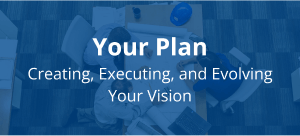Community Insights
Based on the latest economic and vendor insights, as well as interactions with Exotek clients and the SI community, we explore current trends and opportunities impacting your strategic plans, processes, and people.
Beyond the Numbers: Turning 2025 Insight into 2026 Clarity
As planning season winds down, many integrators are finalizing their budgets and strategies for 2026. But the best leaders know that planning isn’t a once-a-year event — it’s a rhythm that connects insight, alignment, and accountability.
This is the time to look beyond financial targets and ask:
- What did 2025 teach us about our business and our market?
- Where did we strengthen capability, not just revenue?
- How can we turn those lessons into a clear, confident direction for 2026?
At Exotek, we’re here to support your planning process at every step:
- Input – Our Industry Insights and quarterly reports can serve as a valuable input to your discussions, offering data and trends that shape realistic assumptions about market conditions.
- Planning – In the Resources section of our website, you’ll find guides, templates, and webinar recordings (like Growing with Purpose) to help structure your process and engage your leadership team.
- Output – As you finalize your 2026 plan, consider scheduling a Strategic Review session with Exotek. We’ll help you test your assumptions, challenge your strategies, and provide feedback from what we’re seeing across the systems integration industry.
Great plans don’t just predict the future — they prepare you for it. As you move into 2026, we can help you connect data, direction, and disciplined execution to keep your business moving forward with purpose.
Let’s talk – contact us today to learn more!
Doing More With Less: Building Scalable Delivery Discipline
With tighter margins and cautious customer spending, most integrators are being asked to deliver more output with the same—or fewer—resources. The difference between surviving and succeeding often comes down to process maturity.
Process excellence isn’t about documentation—it’s about consistency, predictability, and scalability. When your business runs on disciplined systems, every project benefits from shared knowledge, standard tools, and a rhythm of review that keeps improvement continuous.
This quarter, as many firms slow down just enough to catch their breath, it’s the perfect time to:
- Review project delivery steps. Where are the bottlenecks or handoffs that create rework?
- Simplify, don’t add. Eliminate forms or steps that add little value—maturity means clarity, not complexity.
- Reinforce ownership. Ensure process improvement has champions in every function, not just a quality manager.
- Tie metrics to management. Use data not to audit performance but to drive conversations that solve real problems.
Process maturity is your best hedge against market volatility. When demand softens, consistency protects margin; when growth returns, scalability fuels expansion. Exotek can help you evaluate and strengthen your core business processes through our CSIA Audit and Advisory Services, turning good intentions into measurable results.
Contact us today for a free consultation!
Building Tomorrow’s Leaders, Today
Leadership Development
We recently kicked off the Exotek Leadership Development Program (LDP) — a cornerstone of our People Pillar and a key part of how we help integrators strengthen their most valuable asset: their people.
The program is designed for emerging leaders — project managers, department heads, and future executives — who are ready to expand their influence beyond technical expertise. Through a series of interactive sessions, participants are learning to:
- Understand their leadership style and how it shapes team performance.
- Communicate with clarity and impact, adapting to different personalities and work preferences.
- Lead projects and people more effectively, balancing delivery, engagement, and business results.
- Think strategically, connecting daily decisions to organizational goals.
This month’s session focuses on understanding personality preferences using Emotional Intelligence and MBTI®, helping leaders recognize their natural communication and decision-making styles — and how to adapt them to better connect with their teams and clients.
Applications are open for the 2026-2027 cohort – nominate a candidate or submit your interest today!
Networking with Your Peers
Exotek’s Peer Groups also serve as a powerful engine for people development across the industry. They help leaders at all levels:
- Build business acumen through shared learning and real-world examples from other integrators.
- Strengthen collaboration and communication skills by engaging with peers who face similar leadership challenges.
- Expand professional networks that become trusted communities for feedback, idea exchange, and support.
Great integrators don’t just build systems — they build leaders and connections. Through programs like our Leadership Development Program and Peer Groups, Exotek helps you cultivate the skills, confidence, and community your people need to lead the next stage of your company’s growth.







